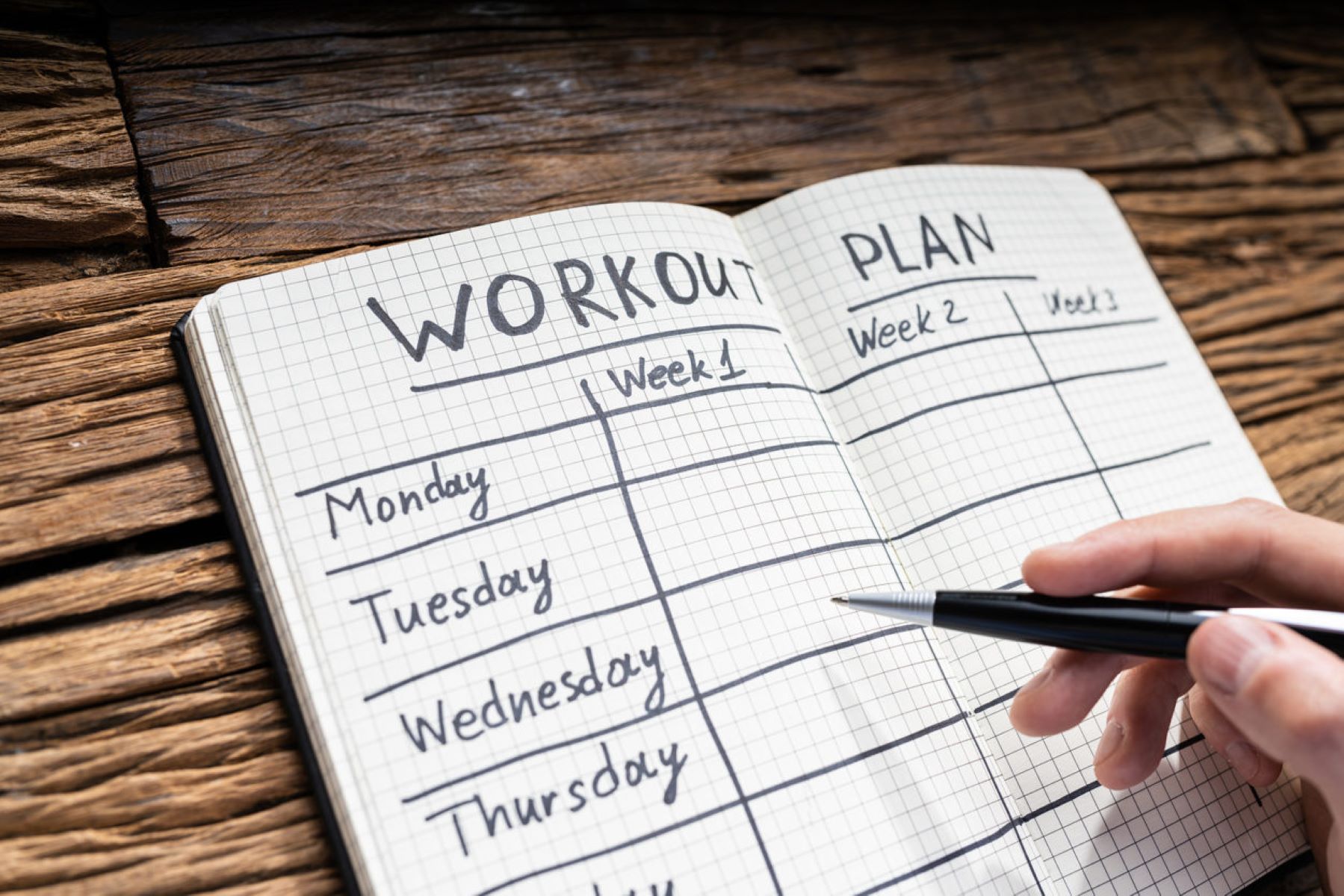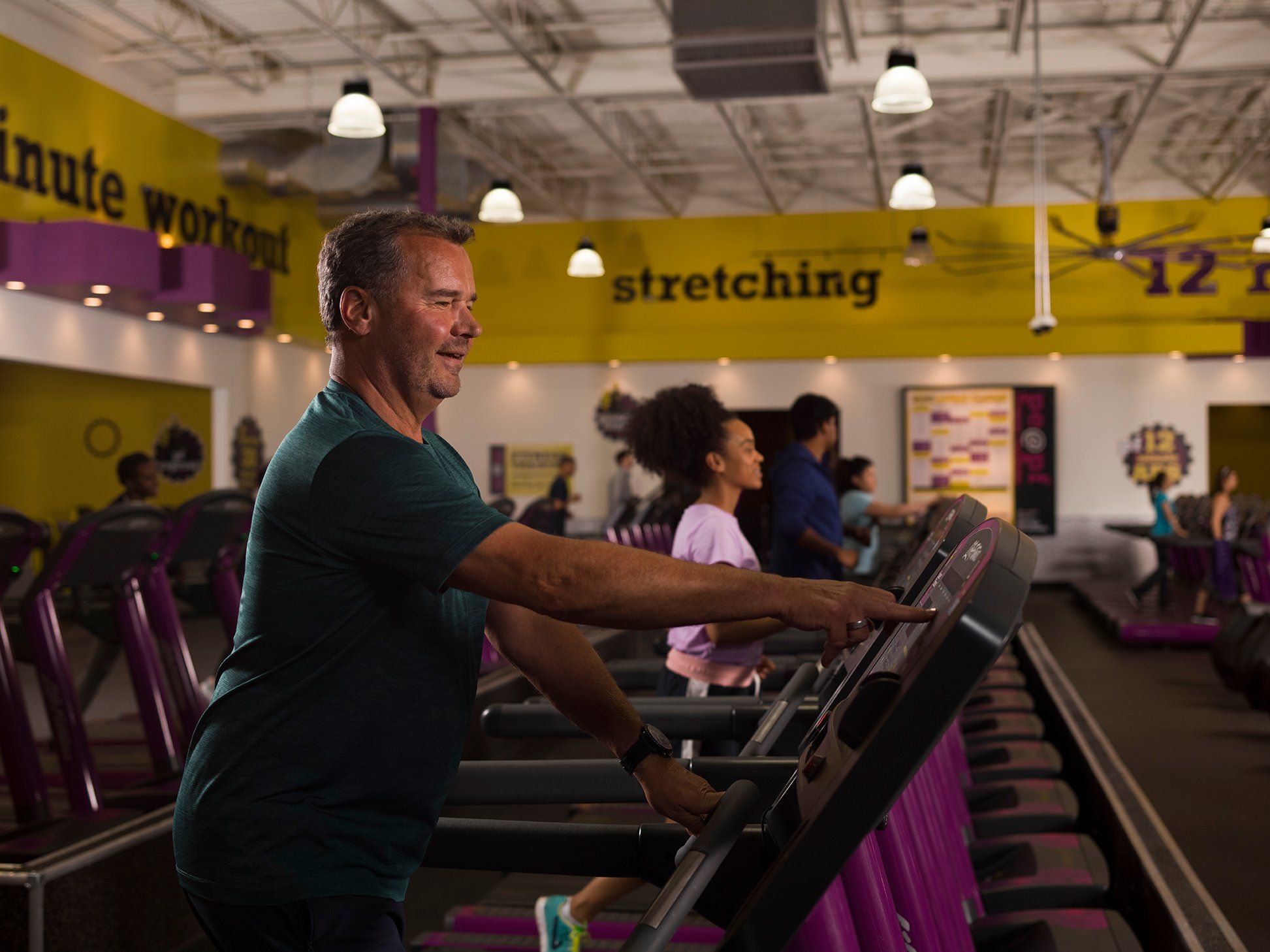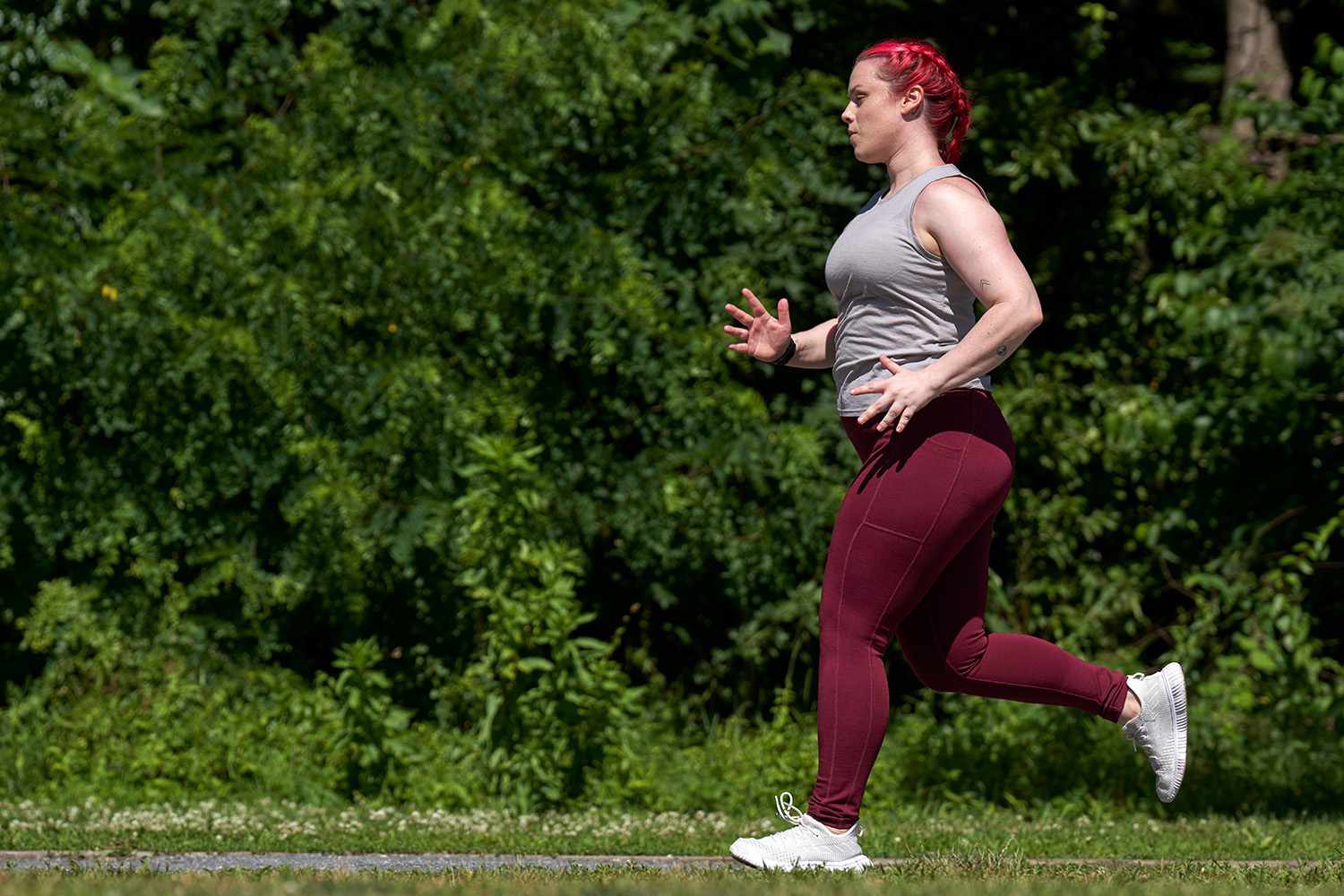

Featured
How Long Should You Workout A Day
Modified: August 21, 2023
Discover the ideal duration of workouts to achieve optimal results. Learn the benefits of featured workouts and how long you should exercise daily to maintain a healthy lifestyle.
Introduction
When it comes to working out, there is no one-size-fits-all approach. The duration of your workout is an essential factor to consider in order to achieve your fitness goals effectively. Whether you want to improve cardiovascular endurance, build strength, or increase flexibility, understanding how long you should work out each day is crucial.
However, determining the ideal workout duration can be a bit challenging, as it depends on several factors unique to each individual. Factors such as your fitness level, overall health, schedule, and specific goals all play a role in shaping the appropriate workout duration.
In this article, we will explore the various factors you should consider before determining your workout duration. We will also provide guidelines for recommended workout durations based on different fitness goals. Additionally, we will discuss the importance of rest and recovery, along with signs of overtraining and excessive workout duration.
It’s essential to approach your workout duration with a holistic mindset, taking into account the different aspects of exercise, including cardiovascular exercise, strength training, and flexibility work. By finding the right balance and customizing your workout duration based on your personal factors, you can maximize the benefits of your workouts and avoid burnout or injury.
So, whether you’re a seasoned gym-goer or just starting your fitness journey, let’s dive into the world of workout duration and discover how to optimize your exercise routine for optimal results.
Factors to Consider Before Determining Workout Duration
Before you settle on a specific workout duration, it’s important to take into account several factors that can influence the optimal length of your exercise session. These factors include:
- Fitness Level: Your current fitness level is a crucial factor to consider. If you’re a beginner, it’s recommended to start with shorter workouts to avoid overexertion. As you progress and build endurance, you can gradually increase the duration of your workouts.
- Overall Health: Your overall health, including any pre-existing medical conditions, should be considered when determining your workout duration. If you have any health concerns, it’s advisable to consult with a healthcare professional or fitness expert to create a safe and effective exercise plan.
- Specific Goals: Your fitness goals will also play a role in determining your workout duration. For example, if your goal is to improve cardiovascular endurance, longer sessions of aerobic exercise may be necessary. On the other hand, if you’re focused on strength training, shorter, more intense workouts may be more suitable.
- Schedule: Your available time and schedule will also impact your workout duration. It’s important to choose a workout duration that is realistic and sustainable for you. If you have a busy schedule, you may need to break your workouts into shorter, more frequent sessions throughout the day.
- Intensity: The intensity of your workouts is another factor to consider. Higher intensity workouts typically require shorter durations due to the increased strain they place on the body. Conversely, lower intensity workouts may require longer durations to achieve the desired results.
- Recovery Time: Giving your body enough time to recover between workouts is vital. Your workout duration should allow for adequate rest and recovery to prevent overtraining and reduce the risk of injuries. Proper recovery will also optimize your performance and results.
By taking these factors into consideration, you can better determine the appropriate duration for your workouts. Keep in mind that the optimal workout duration may vary from person to person, so it’s crucial to listen to your body and adjust as needed. Remember, the ultimate goal is to engage in exercise that is sustainable, enjoyable, and aligned with your specific fitness goals.
Recommended Workout Duration for Various Fitness Goals
When it comes to achieving specific fitness goals, the recommended workout duration can vary. Here are some general guidelines for different fitness goals:
- Improving Cardiovascular Endurance: If your goal is to improve your cardiovascular endurance, aim for moderate to high-intensity aerobic exercises such as running, cycling, or swimming. To reap the benefits, consider engaging in at least 150 minutes of aerobic exercise per week. This can be divided into 30-minute sessions, five days a week, or longer sessions three days a week.
- Building Strength: Strength training is essential for building muscle and increasing overall strength. Ideally, aim for at least two to three strength training sessions per week, with each session lasting around 45 minutes to an hour. Focus on compound exercises that target multiple muscle groups, and allow yourself sufficient rest between sets.
- Increasing Flexibility and Mobility: Flexibility and mobility exercises, such as yoga or stretching routines, can help improve range of motion and prevent injuries. Devote at least 10 to 15 minutes each day to stretching exercises. Additionally, consider incorporating longer yoga sessions into your weekly routine, ranging from 30 to 60 minutes, depending on your preference and schedule.
- Weight Loss: If weight loss is your primary goal, a combination of cardiovascular exercise and strength training is recommended. Aim for at least 150 minutes of moderate-intensity cardio exercises per week, along with two to three strength training sessions. Combine this with a balanced diet to create a calorie deficit for effective weight loss.
- Maintenance and General Health: If your goal is to maintain overall health and fitness, a mix of aerobic exercise, strength training, and flexibility work is ideal. Engage in at least 150 minutes of moderate-intensity aerobic exercise per week and include two to three strength training sessions. Allocating around 10 to 15 minutes to stretching at the end of each session can help improve flexibility and prevent muscle imbalances.
Remember, these are general guidelines, and you can tailor them according to your specific needs and preferences. It’s essential to choose activities that you enjoy and can sustain in the long term. Additionally, listening to your body and adjusting the duration as necessary is crucial for preventing overexertion and injuries.
Now that you have an idea of the recommended workout duration for various fitness goals, you can design a well-rounded exercise plan that aligns with your specific objectives.
Cardiovascular Exercise Guidelines
Cardiovascular exercise, also known as cardio or aerobic exercise, is an essential component of any fitness routine. It helps improve heart health, increase endurance, and burn calories. Here are some guidelines to follow when incorporating cardiovascular exercise into your workout:
- Frequency: Aim to engage in cardiovascular exercise at least three to five times a week. Consistency is key to reaping the benefits of cardio workouts.
- Intensity: Choose an intensity level that suits your fitness level and goals. Moderate-intensity cardio, where you can still carry on a conversation while exercising, is a good starting point. As you progress, you can gradually increase the intensity to high-intensity workouts.
- Duration: The recommended duration for cardiovascular exercise varies based on your fitness level and goals. Start with 30 minutes per session and gradually build up to 60 minutes for maximum benefits. If you’re short on time, splitting your cardio workouts into multiple sessions throughout the day can still be effective.
- Types of Cardio: There are various forms of cardio exercises to choose from, including running, brisk walking, cycling, swimming, dancing, and aerobics classes. Experiment with different activities to find what you enjoy and what fits into your lifestyle.
- Progression: To challenge your cardiovascular system and continue seeing improvements, make sure to gradually increase the duration, intensity, or both of your cardio workouts over time. This will help prevent plateaus and keep your workouts effective.
- Variety: Incorporating a variety of cardiovascular exercises not only helps prevent boredom but also ensures that you are engaging different muscle groups and challenging your body in different ways. Consider mixing up your workouts to keep things exciting and avoid overuse injuries.
- Warm-Up and Cool-Down: Prior to starting your cardio workouts, take a few minutes to warm up by performing some dynamic stretching or low-intensity exercises. After completing your workout, allow time for a cool-down, which can include light stretching to help your body recover.
Remember that everyone’s fitness level and capabilities are different, so it’s important to listen to your body and adapt the guidelines accordingly. Over time, you can adjust the duration and intensity of your cardio workouts to fit your needs and continue challenging yourself.
By following these cardiovascular exercise guidelines, you can effectively improve your cardiovascular health, boost endurance, and achieve your fitness goals.
Strength Training Guidelines
Strength training, also known as resistance training, is crucial for building muscle, increasing strength, and improving overall body composition. By following these guidelines, you can ensure an effective and safe strength training routine:
- Frequency: Aim to engage in strength training exercises at least two to three times a week. This frequency allows for optimal muscle recovery and growth.
- Target Major Muscle Groups: Structure your strength training program to target all major muscle groups, including the chest, back, arms, shoulders, legs, and core. Incorporate exercises that focus on each of these areas to achieve a balanced physique.
- Choose the Right Weight: Select a weight that challenges your muscles without compromising proper form. It should be heavy enough to complete a set with proper technique, but not so heavy that it compromises your ability to maintain good form throughout the entire exercise. Gradually increase the weight as your strength improves.
- Proper Form: Maintaining proper form during strength training exercises is essential for maximizing results and minimizing the risk of injury. Focus on maintaining a neutral spine, engaging your core, and using controlled movements throughout each exercise.
- Number of Sets and Repetitions: Perform two to four sets of each exercise, with eight to twelve repetitions per set, for general strength and muscle building. Adjust the number of sets and repetitions based on your individual goals and preferences.
- Rest and Recovery: Allow yourself sufficient rest between sets to recover and maximize the effectiveness of each set. Rest periods of 1-2 minutes between sets are generally considered adequate. Additionally, ensure that you have at least one day of rest between strength training sessions to allow for full muscle recovery and growth.
- Progression: To continue challenging your muscles and making progress, it’s important to gradually increase the weight or resistance, or the number of sets and repetitions, over time. This progressive overload stimulates muscle growth and strength gains.
- Compound Exercises: Incorporate compound exercises into your strength training routine. These exercises, such as squats, deadlifts, bench presses, and pull-ups, work multiple muscle groups simultaneously and are highly effective for building strength and functional movement.
- Variety: Keep your strength training routine diverse and engaging by incorporating various exercises, equipment, and workout formats. This will help prevent boredom and ensure that you’re challenging your muscles in different ways.
It’s important to approach strength training with proper technique, attention to form, and gradual progression. If you’re new to strength training or unsure about proper form, consider working with a certified personal trainer to ensure you’re performing exercises correctly and safely.
By following these strength training guidelines, you can effectively build muscle, increase strength, and achieve your fitness goals.
Flexibility and Mobility Training Guidelines
Flexibility and mobility training are often overlooked but are essential components of a well-rounded fitness routine. These types of exercises improve joint range of motion, muscle elasticity, and overall movement quality. Here are some guidelines for incorporating flexibility and mobility training into your workout routine:
- Frequency: Aim to engage in flexibility and mobility exercises at least three to five times per week. Consistency is key to seeing improvements in your range of motion.
- Warm-Up: Prior to starting your flexibility and mobility exercises, it’s important to warm up your muscles with some light cardio exercises or dynamic stretches. This helps increase blood flow to the muscles and prepares them for stretching.
- Static Stretching: Static stretches involve holding a stretch position for 20 to 30 seconds. Focus on gradually lengthening the muscle and feeling a gentle stretch. Perform static stretches for the major muscle groups, targeting areas of tightness or specific muscles that may be affecting your mobility. Remember to breathe deeply and relax into each stretch.
- Dynamic Mobility Exercises: Dynamic mobility exercises involve moving through a full range of motion to improve joint mobility and flexibility. Examples include leg swings, arm circles, and walking lunges. Perform these exercises in a controlled manner, focusing on proper form and technique.
- Foam Rolling or Self-Myofascial Release: Incorporate foam rolling or self-myofascial release techniques into your routine to target tight areas and release muscle tension. Roll slowly and focus on areas that feel particularly tight or restricted. Use moderate pressure and adapt to your comfort level.
- Yoga or Pilates: Consider incorporating yoga or Pilates into your routine to improve flexibility, mobility, and overall body awareness. These practices combine stretching, strengthening, and mindfulness to enhance overall movement quality.
- Stretch at the End of Workouts: Save some time at the end of your workouts to incorporate a cool-down that includes static stretches or yoga poses. This helps promote muscle relaxation, reduce muscle soreness, and improve flexibility over time.
- Progression: Just like any other aspect of your fitness routine, aim for progression in your flexibility and mobility training. Gradually increase the duration of your stretches, try more challenging yoga poses, or explore more advanced mobility exercises as you become more comfortable and gain flexibility.
- Listen to Your Body: It’s important to always listen to your body during flexibility and mobility training. Avoid pushing into painful or uncomfortable positions and work within a range of motion that feels appropriate for you. Respect your body’s limits and progress gradually over time.
Flexibility and mobility training are lifelong practices that can bring numerous benefits to your overall fitness and functional movement. By incorporating these guidelines into your routine, you can improve your range of motion, reduce muscle imbalances, and enhance your overall physical performance.
Importance of Rest and Recovery
Rest and recovery are often overlooked but are crucial components of any effective workout routine. It is during periods of rest that your body repairs and rebuilds, allowing you to maximize the benefits of your workouts. Here’s why rest and recovery are so important:
- Muscle Repair and Growth: When you engage in exercise, you create micro-tears in your muscles. It is during rest that these muscles repair and rebuild, becoming stronger and more resilient. Without proper rest, your muscles may not have sufficient time to recover, increasing the risk of overuse injuries and hindering muscle growth.
- Prevention of Overtraining: Overtraining can occur when you push your body too hard without allowing for adequate rest and recovery. Signs of overtraining include persistent fatigue, decreased performance, irritability, and increased susceptibility to illness. By incorporating rest days into your routine, you can prevent overtraining and maintain better overall health and performance.
- Energy Restoration: Rest days allow your body’s energy stores to replenish. During exercise, your body depletes glycogen, the primary energy source. Taking rest days allows the body to restore glycogen levels, ensuring that you have enough energy for subsequent workouts.
- Injury Prevention: Rest and recovery give your body time to repair and strengthen connective tissues, reducing the risk of injuries. Without proper rest, you may be more prone to muscle imbalances, joint strain, and overuse injuries that can hinder your progress and negatively impact your long-term fitness goals.
- Mental Refreshment: Rest days not only benefit your physical well-being but also your mental well-being. Exercise can be mentally demanding, and taking regular breaks can help prevent burnout and maintain your motivation and enthusiasm for your workouts.
- Improved Performance: Scientific studies have shown that incorporating appropriate rest and recovery into your training program can enhance performance. By allowing your body to fully recover, you can perform at your best during workouts and achieve better results over time.
- Quality Sleep: Rest days provide an opportunity to prioritize quality sleep, which is crucial for optimal recovery and overall well-being. During sleep, your body produces growth hormone, repairs damaged tissues, and restores mental and physical function.
Remember, rest and recovery are just as important as the workouts themselves. It’s important to listen to your body and give it the time it needs to recover and recharge. While rest days are essential, active recovery days, such as engaging in light activities like walking or gentle stretching, can also play a role in promoting blood flow and aiding in recovery.
By incorporating proper rest and recovery into your fitness routine, you can optimize your performance, prevent injuries, and ensure long-term success in reaching your fitness goals.
Signs of Overtraining and Excessive Workout Duration
While regular exercise is essential for overall health and fitness, it’s important to strike a balance and avoid overtraining. Overtraining occurs when you push your body beyond its limits without giving it adequate time to recover. Here are some signs to watch out for that indicate you may be overtraining or engaging in excessive workout durations:
- Persistent Fatigue: Feeling constantly tired, despite getting enough sleep, is a common sign of overtraining. This fatigue can manifest as a lack of energy, both physically and mentally, making it difficult to perform daily activities or maintain focus during workouts.
- Decreased Performance: Overtraining can lead to a decline in performance, even though you’re putting in the effort. If you notice a decrease in strength, endurance, or overall athletic performance, it may be a sign that you need a break and some rest to allow for proper recovery.
- Increased Irritability and Mood Changes: Overtraining can affect your mental well-being, leading to irritability, mood swings, and changes in your overall emotional state. If you find yourself feeling more irritable, anxious, or moody than usual, it may be a result of excessive workout durations and lack of adequate rest.
- Insomnia or Disrupted Sleep: Overtraining can disrupt your sleep patterns, making it difficult to fall asleep or stay asleep through the night. If you experience insomnia or a decrease in the quality of your sleep, it could be a sign that your body needs a break.
- Increased Susceptibility to Illness: Overtraining weakens your immune system, making you more susceptible to illnesses such as colds, flu, and infections. If you find yourself getting sick frequently, it may be a result of excessive workout durations and compromised immune function.
- Delayed Recovery: Overtraining can lead to prolonged muscle soreness and delayed recovery time. If you notice that it’s taking longer for your muscles to recover after a workout or that you’re experiencing persistent muscle soreness, it may be a sign that you’re not giving your body enough time to recover adequately.
- Plateaus or Regression in Progress: Overtraining can hinder your progress and even cause regression in your fitness goals. If you’ve hit a plateau or notice a decline in your progress despite consistent effort, it may be a sign that you need to reassess your workout duration and give your body more rest.
If you experience any of these signs, it’s essential to listen to your body and make necessary adjustments to your workout routine. Incorporating rest days, scaling back on workout duration, and prioritizing recovery can help prevent overtraining and promote long-term progress and health.
Remember, exercise should be enjoyable and sustainable. If you’re not allowing your body enough time to recover, it can have negative consequences on your physical and mental well-being. By being mindful of your body’s signals and finding a balance between challenging workouts and adequate rest, you can optimize your fitness journey and prevent overtraining.
Customizing Your Workout Duration Based on Personal Factors
When it comes to determining the optimal workout duration, it’s important to customize it based on your individual factors and preferences. While general guidelines provide a starting point, it’s essential to listen to your body and make adjustments to suit your needs. Here are some personal factors to consider when customizing your workout duration:
- Time Availability: Take into account your daily schedule and commitments. If you have limited time, shorter, more intense workouts may be more practical. However, if you have more flexibility, longer workouts can be accommodated.
- Physical Fitness Level: Consider your current fitness level and adjust your workout duration accordingly. Beginners may need to start with shorter sessions and gradually increase the duration as their fitness improves. Advanced athletes may benefit from longer, more challenging workouts.
- Specific Goals: Tailor your workout duration based on your specific fitness goals. If your goal is to build strength, you may allocate more time to strength training exercises. If weight loss is your focus, longer cardio sessions may be beneficial.
- Tolerance and Recovery Capacity: Pay attention to how your body responds to different workout durations. If you find that longer workouts leave you feeling fatigued and unable to recover adequately, consider shortening the duration. It’s important to find a balance that challenges you without causing excessive strain.
- Hormonal and Stress Levels: Hormonal fluctuations and stress levels can impact your energy levels and recovery capacity. If you’re experiencing high levels of stress or hormonal changes, adjusting your workout duration to allow for more rest and recovery may be beneficial to maintain overall well-being.
- Preference and Enjoyment: Ultimately, the workout duration should be something you enjoy and can sustain in the long term. If longer workouts feel monotonous or draining, consider breaking them into shorter, more frequent sessions or explore different activities that bring you joy.
- Previous Injuries or Health Conditions: If you have a history of injuries or underlying health conditions, it’s important to consider these factors when determining your workout duration. Consult with a healthcare professional or fitness expert to ensure that you’re engaging in exercises that are safe and suitable for your specific situation.
Remember, flexibility is key when customizing your workout duration. What works for someone else may not work for you, and that’s okay. By being aware of your personal factors and making adjustments accordingly, you can create a workout routine that is tailored to your needs and supports your overall well-being.
Regularly evaluating and reassessing your workout duration based on changes in your goals, lifestyle, and physical condition is essential. Adjust as needed to ensure that your workouts remain effective, enjoyable, and sustainable in the long run.
Conclusion
Determining the ideal workout duration is essential for achieving your fitness goals and maintaining a healthy lifestyle. By considering factors such as fitness level, specific goals, time availability, and recovery capacity, you can customize your workout duration to suit your individual needs and preferences.
Cardiovascular exercise, strength training, flexibility and mobility work all play important roles in a well-rounded fitness routine. Following guidelines for each type of exercise can help you optimize your workouts and achieve your desired results.
Additionally, it’s vital to prioritize rest and recovery to avoid overtraining and promote overall well-being. Giving your body adequate time to recover allows for muscle repair, prevents injuries, and improves performance. Listening to your body and adjusting your workout duration based on personal factors is crucial for long-term success and sustainability.
Remember, these guidelines are meant to provide a framework, but it’s important to listen to your body and make adjustments as needed. Every individual is unique, and what works for one person may not work for another.
Ultimately, finding the right workout duration for you is about striking a balance between challenging yourself and allowing for proper rest and recovery. By customizing your workout duration based on your personal factors and preferences, you can create a sustainable and effective exercise routine that helps you reach your fitness goals and maintain a healthy lifestyle.









